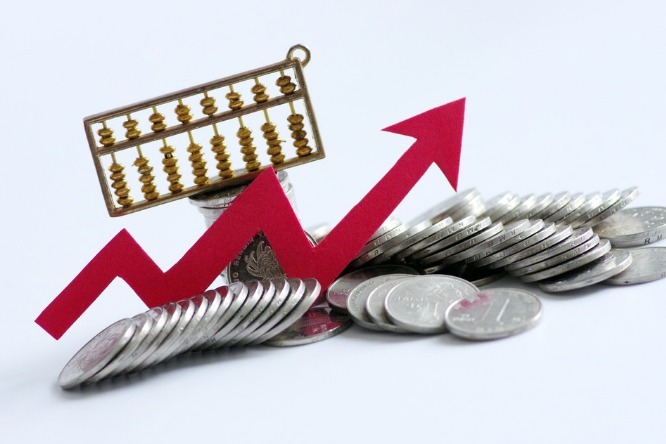China’s economy will play key role in world economic recovery, experts say
Our reporter Meng Ke
On April 6, according to the data released by the China Federation of Logistics and Purchasing, the global manufacturing PMI in March 2023 was 49.1%, a decrease of 0.8 percentage points from the previous month. 50%. In the first quarter, the average global manufacturing PMI was 49.4%, an increase of 0.5 percentage points from the fourth quarter of last year.
Xu Hongcai, deputy director of the Economic Policy Committee of the China Policy Science Research Association, told reporters that overall, the world economy is still in the process of recovery, but the momentum of recovery is weak, and there have been twists and turns in the short term. In March, China’s manufacturing purchasing managers index was 51.9%, running in the expansion range for three consecutive months, showing that the economy continued to maintain a steady recovery. The Chinese economy will play a key role in the recovery of the world economy.
The continued recovery of China’s economy drives the global economy
In terms of sub-regions, the Asian manufacturing industry has maintained a steady recovery trend and has become the main driving force for the global economic recovery.
The Asian manufacturing PMI has remained stable at above 51% for two consecutive months, with an average of 51.4% in the first quarter, an increase of 1.8 percentage points from the fourth quarter of last year. Among them, in March 2023, the Asian manufacturing PMI was 51.8%, a slight decrease of 0.1 percentage points from the previous month. From the perspective of major countries, China’s manufacturing PMI is still at a relatively good level of around 52%; India’s manufacturing PMI has risen to over 56%; Thailand and the Philippines’ manufacturing PMI have remained above 52%; Japan, South Korea, Vietnam and Malaysia’s manufacturing PMIs are all below 50%.
According to a report released by the Asian Development Bank, the recovery of China’s economy and good domestic demand in India are expected to promote the strong growth of the Asian economy. It is estimated that the economic growth rate of developing economies in Asia is expected to reach 4.8% in 2023.
In addition, many international institutions are optimistic about the continued recovery of China’s economy as a stimulus to the Asian economy and even the global economy. The IMF predicts that every 1 percentage point increase in China’s economic growth rate will increase the world economic growth rate by 0.3 percentage points. The IMF, the World Bank and the OECD have all raised their forecasts for China’s economic growth in 2023 to above 5%.
Invesco Asia Pacific (excluding Japan) global market strategist Zhao Yaoting told the Securities Daily reporter that China may become the only major economy to achieve positive economic growth in 2023, and emerging economies are also observing specific spillover effects.
U.S. recession expectations continue to heat up
“The current global economic recovery momentum is weak. In addition, as the impact of the US and European banking crises on the real economy gradually emerges, the downward pressure on the overseas economy may further increase in the future, and the global manufacturing PMI may continue to run in the contraction range for a period of time in the future. .” Wang Qing, chief analyst of Dongfang Jincheng Research and Development Department, said in an interview with a reporter from the Securities Daily.
The ISM report shows that in March, the U.S. manufacturing PMI was 46.3%, down 1.4 percentage points from the previous month, below 50% for five consecutive months, and set a new low since June 2020. Changes in sub-indexes show that weaker demand and lower employment are the main reasons for the continued weakening of the U.S. manufacturing industry. The new orders index decreased by 2.7 percentage points from the previous month to 44.3%, which was lower than 50% for six consecutive months; the employment index decreased by 2.2 percentage points from the previous month to 46.9%, which was a month-on-month decline for three consecutive months, and was lower than 50% for two consecutive months. 50%.
Wang Qing believes that the recovery of U.S. commodity consumption is coming to an end. As the Federal Reserve continues to raise interest rates sharply, the demand compression effect is continuing to ferment.
Some recent crises in the US and European banking industries have increased the uncertainty of the US economic recovery, and institutions continue to heat up expectations of US economic recession. Standard Chartered Bank predicts that within the next 12 months, the probability of the US economy entering a recession will reach 80%. Goldman Sachs raised the probability of a U.S. recession to 35 percent from its previous forecast of 25 percent. Due to the high inflationary pressure, the current Federal Reserve has no intention to change the pace of interest rate hikes. The rate hikes in the first half of the year are still continuing, and the negative impact on US consumption and investment continues to appear.
[Responsible editor: Cao Jing]
